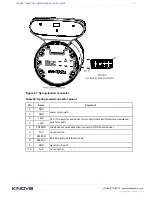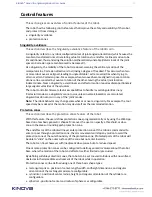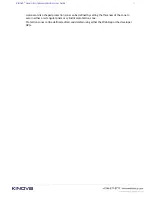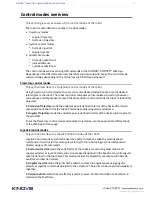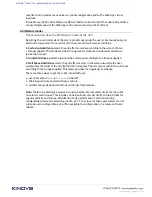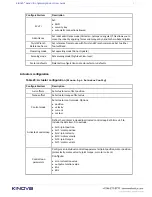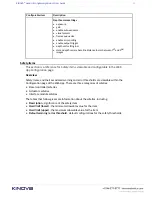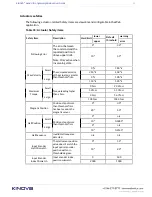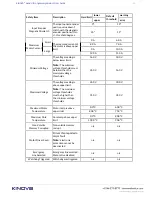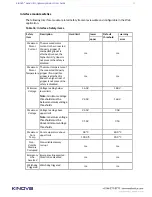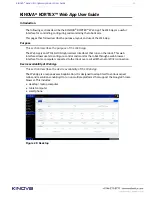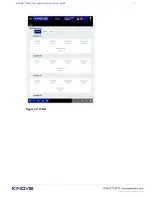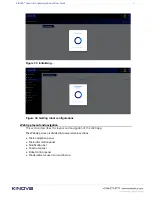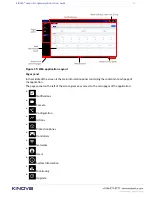
KINOVA
®
Gen3 Ultra lightweight robot
User Guide
78
Control modes overview
This section gives an overview of the control modes of the robot.
The robot is controllable in a number of control modes:
• trajectory modes
º angular trajectory
º Cartesian trajectory
• joystick control modes
º Cartesian joystick
º angular joystick
• admittance modes
º Cartesian admittance
º joint admittance
º null space admittance
The control mode can be set using API commands or the
KINOVA
®
KORTEX™
Web App
.
Depending on
the API command used, the robot control mode will change.The control mode
will also change
depending on the Virtual Joystick interface being used.
Trajectory control modes
This section describes the Trajectory Control modes of the robot.
Using Trajectory Control modes, the user can send a desired endpoint pose or set of desired
joint angles to the robot. The robot controller computes an interpolated trajectory (between
current pose and target pose) to reach the final position, and commands the robot to follow this
trajectory.
In
Cartesian Trajectory
mode the endpoint pose is defined in terms of the desired Cartesian
space position of the end of the robot. This mode enables singularity avoidance.
In
Angular Trajectory
mode the endpoint pose is defined in terms of the desired joint angles for
the actuators.
To set the Trajectory control mode and execute trajectories, use the appropriate API methods,
or the
Web App
Actions page.
Joystick control modes
This section describes the Joystick Control modes of the robot.
Joystick Control modes provide the user the ability to move the robot by sending speed
commands or twist (velocity and angular velocity) to the robot using joystick commands or
directly using cyclic commands.
In
Cartesian Joystick
mode the end effector of the robot is moved using twist (linear and
angular velocity) or joystick commands. Linear speed is defined in the base frame, while angular
speed is defined in the tool frame. This mode provides for singularity avoidance and obstacle
avoidance (protection zones).
In
Angular Joystick
mode the joints of the robot are moved in angular space using angular
velocity or joystick commands provided to the actuators. The joints can be moved individually or
together.
In
Vision Joystick
mode, the end effector is made to move, both in translation and rotation, in
relation to the Tool frame.


